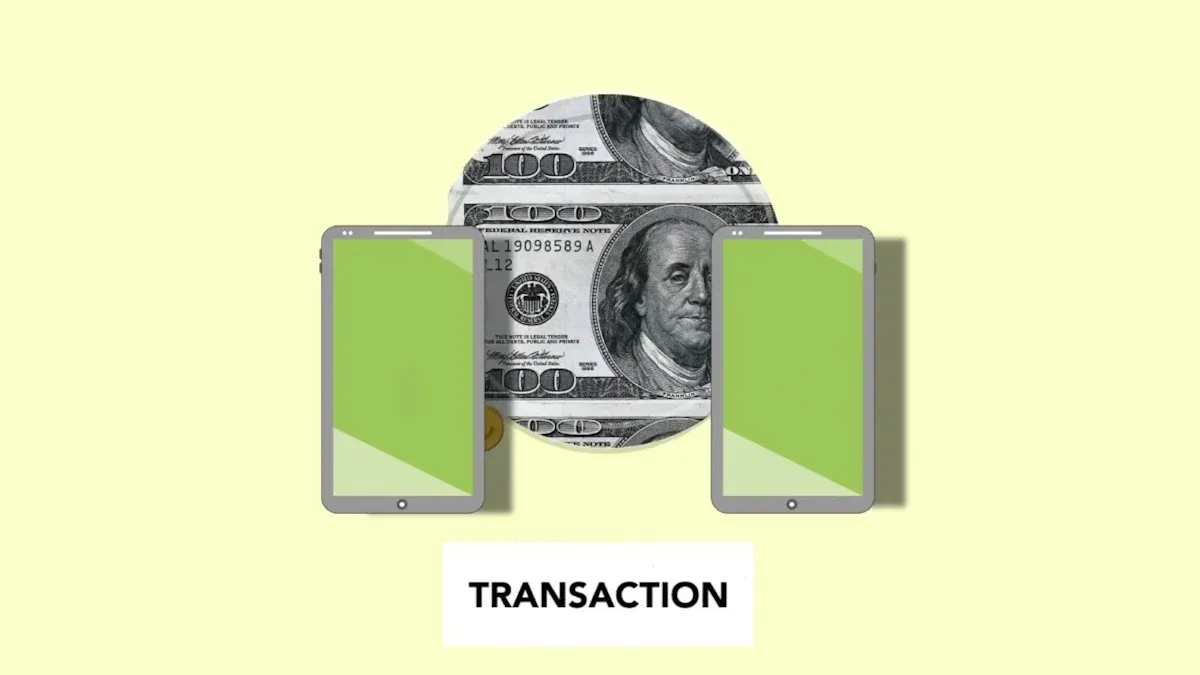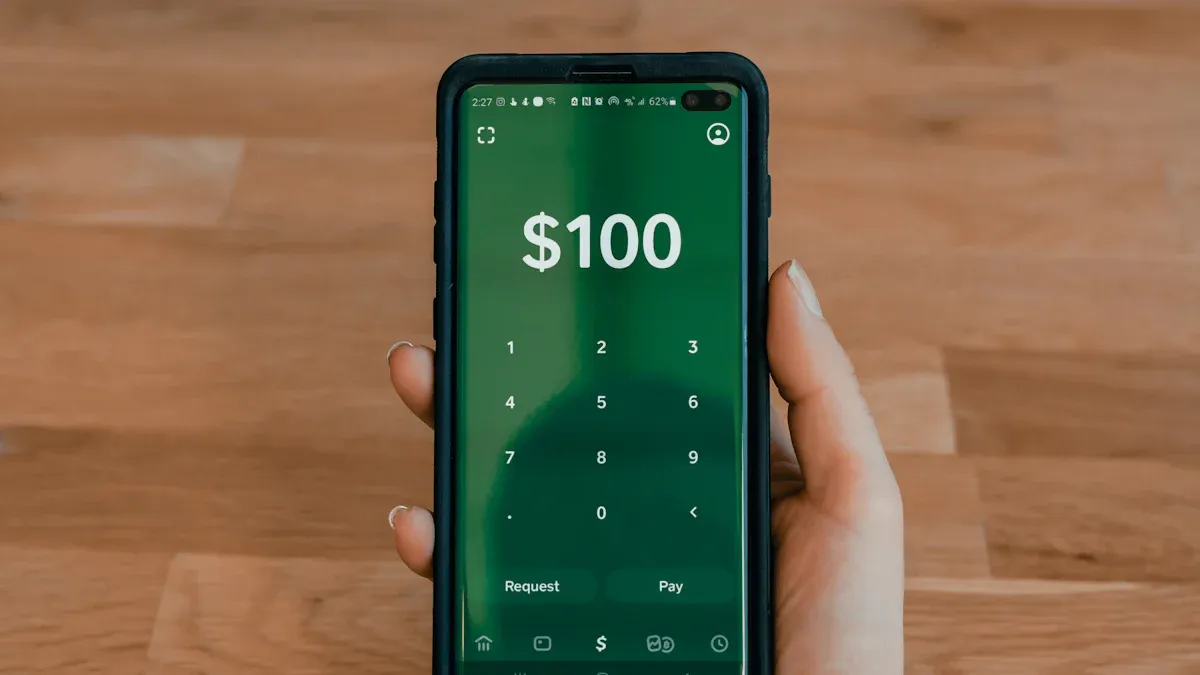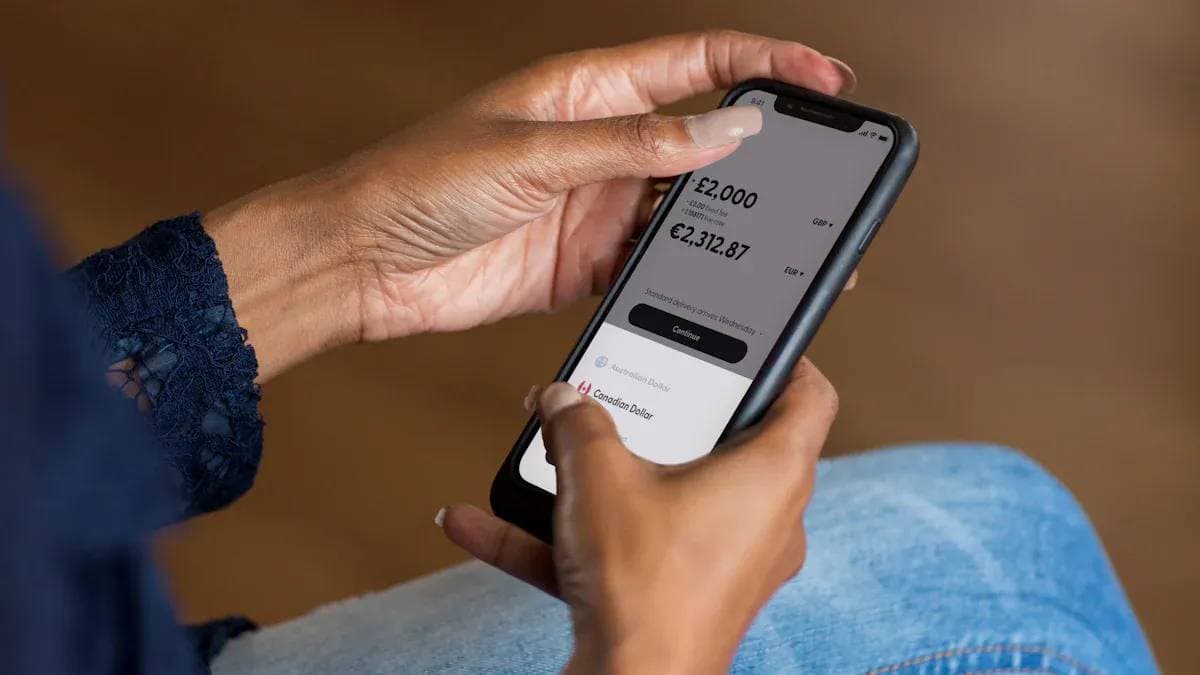- EasyCard
- Trade
- Help
- Announcement
- Academy
- SWIFT Code
- Iban Number
- Referral
- Customer Service
- Blog
- Creator
Can Cryptocurrency End the Era of High-Cost Remittances? A Cost Comparison Study

Image Source: pexels
Can cryptocurrency end the era of high-cost remittances? The answer is largely yes.
Cryptocurrency leverages blockchain technology to significantly reduce the direct and indirect costs of cross-border remittances. Traditional international bank transfers typically take two to five business days to settle. Cryptocurrency shortens this long wait to just a few minutes. An in-depth cost comparison study clearly reveals this disruptive potential, showcasing its huge advantages in efficiency and cost control.
Key Points
- Cryptocurrency remittances are cheaper than traditional bank remittances because they eliminate intermediary bank fees and high exchange rate markups.
- Cryptocurrency remittances are fast, arriving in minutes, while traditional bank remittances take days.
- Using cryptocurrency for remittances carries risks, such as sudden changes in coin value or stablecoins potentially becoming unstable.
- Cryptocurrency remittance operations require care; users must securely store their private keys and choose safe platforms.
- Cryptocurrency regulations are still evolving, and users need to understand local laws before remitting.
Cryptocurrency Remittance Cost Comparison Study

Image Source: pexels
To understand the disruptiveness of cryptocurrency, the most intuitive way is to conduct a detailed cost comparison study. There are fundamental differences in cost structures between the traditional financial system and emerging blockchain technology, which directly determine the fees users ultimately pay.
The High Cost Structure of Traditional Remittances
Traditional international remittances mainly rely on the SWIFT (Society for Worldwide Interbank Financial Telecommunication) network. Although this system is mature and stable, its cost structure is complex and opaque, with fees layered on top of each other and ultimately borne by the user. Its costs mainly include the following parts:
- Explicit Fees:
- Handling Fee (Handling Fee): The service fee charged by the remitting bank when processing the remittance instruction, usually a fixed amount, for example, $35.
- Cable Charge: The communication cost for the bank to send payment information through the SWIFT network.
- Intermediary Bank Fees: Before the funds reach the final receiving bank, they may need to pass through one or more correspondent banks. These banks deduct service fees directly from the remittance principal, usually $15 to $30 each.
- Hidden Fees:
- FX Margin Loss (FX Margin Loss): This is the largest hidden cost in traditional remittances. The exchange rate provided by the bank is not the real-time market mid-rate but includes a 2% to 5% markup. A 2022 McKinsey study pointed out that this exchange rate markup can sometimes account for 40% to 60% of the total cost of international commercial payments. This means that for a large remittance, just the exchange rate alone can result in a loss of hundreds of dollars.
The Cost Advantages of Cryptocurrency
Cryptocurrency remittances, especially through stablecoins (such as USDT or USDC), fundamentally change the cost structure. Through decentralization and automation, it greatly compresses the fee space. This cost comparison study reveals the sources of its advantages:
- Decentralization: Blockchain technology enables peer-to-peer (P2P) value transfer without going through layers of correspondent banks. Funds are sent directly from the remitter to the receiver’s digital wallet, completely eliminating intermediary bank fees.
- Automated Compliance: Smart contracts can automatically execute preset rules, replacing a large amount of manual review and compliance processes in traditional finance. This significantly reduces the operating costs of financial institutions, thereby lowering the handling fees charged to users.
- Extremely Low Transaction Fees: The handling fees for stablecoin payments mainly depend on the blockchain network they run on.
According to industry data, the comprehensive handling fee for stablecoin payments through efficient blockchain networks can be reduced to 0.1% to 0.8%, far below the charging standards of traditional banks.
Choosing different blockchain networks results in huge fee differences. For example, the Ethereum network has higher fees, while other networks provide highly cost-effective options.
| Blockchain Network | Transaction Fee Estimate (USDT/USDC Example) |
|---|---|
| Ethereum | Higher ($5 - $30+) |
| Tron | Extremely Low (Usually < $1) |
| Solana | Extremely Low (Usually < $0.01) |
| Other Layer2 Networks | Extremely Low (Usually < $1) |
Case Quantitative Comparison
To more intuitively show the differences, we conduct a specific cost comparison study. Assume a user in the United States needs to remit $10,000 to a recipient in Hong Kong.
Scenario 1: Through Traditional Bank Remittance
- Remittance Handling Fee: The remitting bank charges about $35.
- Intermediary Bank Fees: Assume passing through one intermediary bank, deducting about $25.
- FX Margin Loss: Assume the bank’s provided exchange rate is 2% worse than the market mid-rate. The recipient receives HKD; we calculate the loss in equivalent USD.
- Loss Amount = $10,000 * 2% = $200
- Total Cost: $35 + $25 + $200 = $260
- Final Arrival Amount (Equivalent): $10,000 - $260 = $9,740
Scenario 2: Through Cryptocurrency Platform Biyapay Remittance
- Purchase Stablecoin: The user in the United States purchases USDC equivalent to $10,000 through compliant channels using fiat currency. Assume the platform charges a 0.5% handling fee.
- Fee = $10,000 * 0.5% = $50
- Transfer Fee: The user sends USDC to the recipient through the Biyapay wallet, choosing a low-cost network such as Tron or Solana.
- Network Fee (Gas Fee) ≈ $1
- Receipt and Withdrawal: The recipient in Hong Kong receives USDC through Biyapay and exchanges it for USD before withdrawing to a licensed Hong Kong bank account. Assume withdrawal fee is 0.
- Total Cost: $50 + $1 = $51
- Final Arrival Amount: $10,000 - $51 = $9,949
Through this simple cost comparison study, the conclusion is obvious: using the cryptocurrency solution, the user can receive more than $200 extra. This difference becomes even more significant as the remittance amount increases, fully proving the huge potential of cryptocurrency in ending the era of high-cost remittances.
Remittance Efficiency Comparison: From Days to Seconds

Image Source: unsplash
In addition to fees, remittance efficiency is another key dimension that showcases the disruptive potential of cryptocurrency. There are fundamental differences in processing speed between the traditional financial system and blockchain technology, which directly determine the time funds take from the remitter to the recipient.
The Long Wait of Traditional Remittances
The process of traditional international remittances is lengthy and complex, with funds usually taking 2 to 5 business days to arrive. This delay is not accidental but is determined by the underlying system structure.
First, traditional remittances rely on a multi-level clearing network. After funds are sent from the remitting bank, they cannot reach the receiving bank directly. They need to be relayed through one or more intermediary banks (correspondent banks). Each bank has its own internal processing procedures and cutoff times, and funds incur time delays at each node.
Second, strict manual reviews are another time-consuming link. To comply with global anti-money laundering (AML) and know-your-customer (KYC) regulations, banks need to conduct manual reviews of large or suspicious transactions. This process slows down fund circulation, especially when information is incomplete or risk alerts are triggered.
Dual Constraints of Business Days and Time Zones
The traditional banking system strictly adheres to the concept of business days and operates under different global time zones, which greatly limits remittance efficiency.
- Holiday Suspension: Banks close services on public holidays. For example, a remittance initiated on Thanksgiving (Thursday) in the United States will have fund processing suspended until the next business day (Friday) when the bank reopens.
- Weekend Delays: Cross-border remittances initiated late on Friday afternoon may already be after business hours at the receiving bank’s location due to time zone differences. This means the transaction will not be processed until Monday.
- Chain Effect: If any bank on the remittance path (remitting bank, intermediary bank, receiving bank) encounters a holiday, the entire remittance process will be interrupted.
These factors work together to make the arrival time of traditional remittances full of uncertainty, causing great inconvenience to users who need urgent funds.
Instant Arrival of Cryptocurrency
Cryptocurrency fundamentally changes the mode of fund transfer, shortening remittance time from “days” to “minutes” or even “seconds.” This leap in efficiency stems from several core characteristics of blockchain technology.
Blockchain is a decentralized network that runs 24/7, enabling peer-to-peer value transfer. Funds are sent directly from the remitter’s digital wallet to the recipient’s digital wallet without any intermediary bank involvement. This process is automatically executed by code, achieving “payment versus payment,” with information flow and fund flow completed synchronously.
Transaction speed depends on the blockchain network used. Even early-designed networks are far more efficient than traditional systems.
| Blockchain Network | Average Transaction Confirmation Time |
|---|---|
| Ethereum | About 12-15 seconds |
| Tron (TRC-20) | Usually less than 1 minute |
| Solana | Usually less than 1 second |
This near-instant settlement capability means users can initiate remittances at any time (including weekends and holidays), and the recipient can receive and use the funds within minutes.
A highly convincing example is the mBridge project. This is a multi-central bank digital currency (multi-CBDC) platform led by the Bank for International Settlements (BIS). The project connects the central banks of mainland China, Hong Kong, Thailand, and the UAE, allowing them to directly exchange their respective issued digital currencies through distributed ledger technology (DLT).
The mBridge project combines messaging and fund settlement functions into one, becoming an efficient one-stop international payment platform. It bypasses complex correspondent bank networks, shortening cross-border payment settlement time from days to seconds while potentially halving costs. This fully proves the huge potential of blockchain technology in improving global payment efficiency, heralding the arrival of a faster and cheaper era of global remittances.
Risks and Challenges of Cryptocurrency Remittances
Although cryptocurrency shows great potential in fees and efficiency, users must clearly recognize its inherent risks and challenges before adopting it for remittances. These factors constitute obstacles that must be overcome before it becomes a mainstream payment method.
Market Price Volatility Risk
For users remitting with non-stablecoins like Bitcoin, drastic market price fluctuations are the biggest risk. The value of cryptocurrency can change dramatically in a short time, meaning the funds ultimately received by the recipient may be far less than expected.
The case of El Salvador adopting Bitcoin as legal tender provides a warning. Studies show that after Bitcoin prices suffered a shock, the country’s remittance volume dropped significantly by about 11% in one month. This volatility makes users more inclined to view Bitcoin as a speculative investment rather than a reliable daily remittance tool.
Stablecoin De-Pegging Risk
To avoid price fluctuations, many people choose to use stablecoins. However, not all stablecoins are absolutely safe. Stablecoins are mainly divided into fiat-collateralized, crypto-collateralized, and algorithmic types. Among them, algorithmic stablecoins have particularly prominent risks.
The 2022 collapse of TerraUSD (UST) is a painful lesson. UST relied on its sister token LUNA to maintain a 1:1 peg with the USD through an algorithm. When market panic led to massive sell-offs, this algorithmic mechanism failed, triggering a “death spiral,” ultimately causing the value of UST and LUNA to nearly zero, evaporating about $60 billion in market value from the entire ecosystem. This event shows that even currencies named “stable” may have structural defects and de-pegging risks.
Operational Complexity and Security Threshold
Unlike traditional banking apps, using cryptocurrency usually requires users to manage private keys and digital wallets themselves. This “self-custody” model gives users complete control over their assets but also brings new risks.
- Private Key Loss Risk: Users need to properly store the mnemonic phrase (private key) consisting of a long string of words. Once lost, all funds in the wallet will be permanently irretrievable, with no customer service able to help recover them.
- Technical Threshold: Safely using digital wallets requires a certain level of technical knowledge to prevent phishing, malware, and other hacking attacks. For users unfamiliar with technology, this undoubtedly raises the usage threshold.
Global Regulatory Uncertainty
Regulatory policies for cryptocurrency in countries around the world are still evolving, bringing legal and compliance uncertainties. For example, the “Travel Rule” launched by the Financial Action Task Force (FATF) requires virtual asset service providers (VASPs) to collect and exchange identity information of the remitter and recipient when processing transactions. This regulation aimed at combating money laundering increases compliance costs and means that the anonymity of cryptocurrency is diminishing. When conducting cross-border remittances, users must pay attention to the latest regulations in both jurisdictions to avoid unintentionally violating the law.
This cost comparison study confirms that cryptocurrency has significant advantages in cost and efficiency, with huge potential to end the era of high-cost remittances. At the same time, users must face and manage challenges such as price volatility, operational security, and compliance. Looking to the future, as global central banks actively explore digital currencies, the popularization of technology, user education, and the improvement of regulatory frameworks will be key to it becoming a mainstream payment method.
FAQ
Are cryptocurrency remittances really cheaper than banks?
Yes. Cryptocurrency remittances eliminate intermediary bank fees and high exchange rate markups. Users only need to pay a small platform fee and network fee. For a $10,000 remittance, using cryptocurrency can usually save more than $200 in costs.
Is it safe to use cryptocurrency for remittances?
Security depends on the user’s operation and choices.
Users need to properly store private keys and guard against phishing. Choosing reputable, regulated platforms and using stablecoins backed by asset reserves can significantly reduce price volatility and platform risks.
Is it very complicated for ordinary people to operate cryptocurrency remittances?
Early operations were indeed complicated. But now many platforms have simplified the process, with a user experience similar to electronic banking. Users purchase stablecoins with fiat currency and enter the recipient’s address to transfer. Choosing a user-friendly platform is key to reducing operational difficulty.
Is remitting with cryptocurrency legal?
Legality varies by country and region. Global regulatory policies are constantly improving. Before conducting cross-border remittances, users need to understand the laws and regulations of both the remitting and receiving locations to ensure that transaction activities comply with local regulatory requirements.
*This article is provided for general information purposes and does not constitute legal, tax or other professional advice from BiyaPay or its subsidiaries and its affiliates, and it is not intended as a substitute for obtaining advice from a financial advisor or any other professional.
We make no representations, warranties or warranties, express or implied, as to the accuracy, completeness or timeliness of the contents of this publication.




Contact Us
Company and Team
BiyaPay Products
Customer Services
is a broker-dealer registered with the U.S. Securities and Exchange Commission (SEC) (No.: 802-127417), member of the Financial Industry Regulatory Authority (FINRA) (CRD: 325027), member of the Securities Investor Protection Corporation (SIPC), and regulated by FINRA and SEC.
registered with the US Financial Crimes Enforcement Network (FinCEN), as a Money Services Business (MSB), registration number: 31000218637349, and regulated by FinCEN.
registered as Financial Service Provider (FSP number: FSP1007221) in New Zealand, and is a member of the Financial Dispute Resolution Scheme, a New Zealand independent dispute resolution service provider.




















